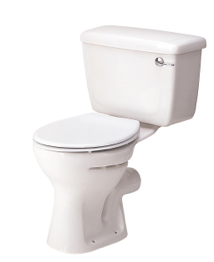We don’t have to tell you that buying a home is a huge investment – it’s usually the biggest investment you’ve ever made! That’s why we recommend you get a whole home plumbing inspection done by your trusty plumbers (hey, that’s us!).
Sure, the home inspector will go through the home and find a lot of the flaws. But, we’ve seen more than a couple cases where there were plumbing issues that should have been found, but weren’t.
Not only is that scary, who knows what could be going on in those pipes, but it’s a missed opportunity. Knowing what kind of pipes and drains you have, and what condition they’re in can be a very useful negotiation tool.
To avoid any surprises down the road, inspect these three things before purchasing a home.
Main sewer line
It’s always a good idea to have a plumber perform a camera inspection on the main sewer line. Not only will it alert you of any clogs, but it can show you the overall condition of the line. If your line is severely deteriorated, this inspection will make you aware of a hidden, costly issue.
Water heater
The rule of thumb is that a water heater will last about ten years. Granted, that estimate is dependant on the water quality, how the heater is being used, maintenance, and installation. For example, if it heats your home and delivers hot water to all of your faucets, there’s a good chance it won’t make it a full ten years.
Having a plumber inspect the water heater to see what condition it’s in and if it’s a good fit for your water needs is a must. A lot of times, families will downsize their water heater after the kids move out, because they’re using less water. So, it’s important to ensure the home’s water heater will meet your family’s needs.
Toilets
A lot of toilets leak at the base. It’s an insignificant problem most of the time, except for when the issue persists. Over time, it can cause serious damage and in some cases, it can make your floor rot.
Luckily, identifying a leaky toilet base is fairly simple:
- Look for discoloration or warping around the toilet base.
- With your foot, check if the floor moves or feels soft at the base.
- Check to see if the toilet bowl will rock from side to side. If it does, it signals that the seal is bad, the toilet isn’t properly secured to the flange, or the flange itself isn’t secured.
We’re not trying to scare you out of buying a home. In fact, we’re trying to inform and empower you. If you have a house you’d like us to inspect or any additional questions, just give us a call!









